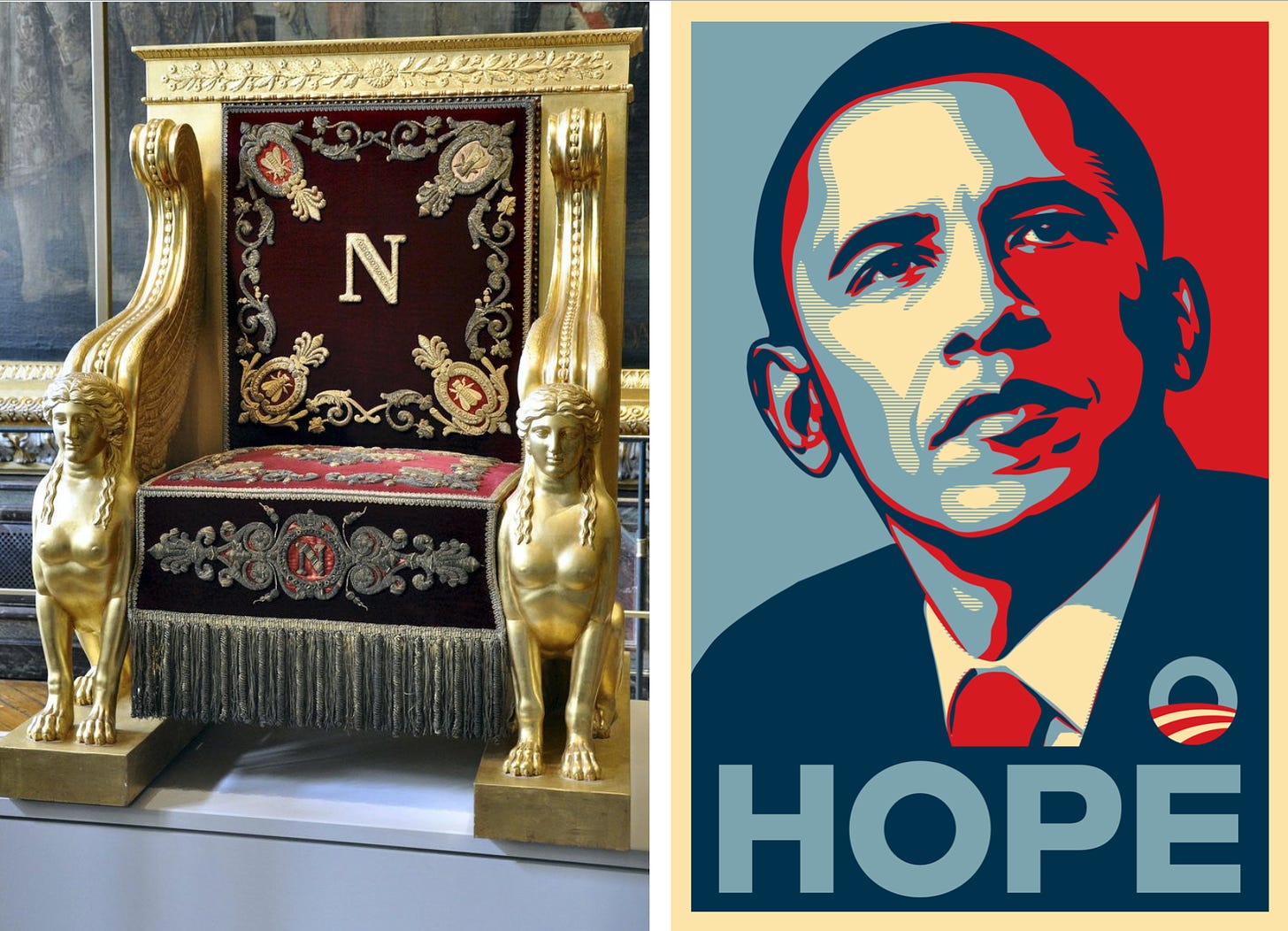This essay was originally published by Engelsberg Ideas in November 2023.
In June 2020, everyone was ‘taking the knee’. Protests had erupted in the United States and spread to dozens of countries around the world, after the killing of an African American man, George Floyd, by police in Minneapolis. The act of kneeling on one leg, en masse, quickly became one of the most resonant symbols of opposition to police brutality and racial discrimination. Crowds gathered to perform the gesture in London’s Hyde Park, outside the Palais de Justice in Paris, on the streets of Sydney and before the US consulate in Milan. In Washington, nine Democrat members of Congress donned West African scarves and kneeled before cameras in the Capitol Visitor Center. Canadian Prime Minister Justin Trudeau observed the ritual, as did members of the National Guard in Hollywood and Metropolitan Police in Westminster. In Britain and beyond, ‘taking the knee’ became part of pre-match proceedings in professional football.
Just three years later, it is difficult to recount how dramatic these events were. Without any planning or coordination – at a time, in fact, when many countries had social distancing measures in place due to the Covid pandemic – a global protest movement had sprung into existence virtually overnight. It was clear that iconography, striking visual gestures and symbols broadcast through social media, had been part of the mechanism that made it happen.
Where did ‘taking the knee’ come from? The American Football player Colin Kaepernick, who began using the pose as a protest during national anthems in 2016, is credited with inventing it. Yet the gesture is freighted with older meanings. Open a book of Christian iconography and you will see kneeling men and women across the ages, symbolising devotion, humility and respect. Even in relation to the cause of racial equality, the pose has – in the ambiguous phrase used by numerous press articles – ‘a long history’. At the bottom of the Wikipedia page for ‘Taking the Knee’, for instance, there is a curious section noting two precursors. In February 1965 the Reverend Martin Luther King Jr led a group of civil rights protestors in praying on one knee outside Dallas County courthouse. Meanwhile, more than a century earlier, the image of a kneeling African man had been a popular symbol of the Evangelical movement for the abolition of slavery.
What should we make of these precedents? None of the publications that noted them suggested any actual link with Kaepernick or the later protests. Yet I could not dispel the feeling that, in the summer of 2020, the past was speaking through those crowds of kneeling people. We are today so immersed in media that a sense of imitation, of the re-enactment of some earlier episode, hangs over every public act. Even the violent scenes that accompanied those protests, the pulling down of statues and the torching of buildings, seemed to function as a kind of familiar iconography, symbols of revolution that had somehow sprung from our cinematic imagination into reality.
My attempts to make sense of all this brought me to a rather unexpected place. They brought me to the European Renaissance of the fifteenth and sixteenth centuries; or rather, to a vision of the Renaissance put forward by a singular thinker, the German art historian Aby Warburg. Though he died almost a century ago, Warburg thought about images in a way that seems highly prescient today. He recognised that the power of iconography lay in its potential for transmission across space and time, its ability to accrue new meanings in different contexts. He warned, moreover, that this power could be destructive as well as creative.
Warburg is probably best known today as a collector of books, and for good reason. Born in 1866, he was the eldest son of an illustrious Jewish banking family based in Hamburg and New York. As legend has it, the thirteen-year-old Warburg gave up his claim on the family business to his brother Max, asking only that he would never be short of money for books. By 1919 he had collected enough to establish the Library of Cultural Studies in Hamburg, a setting famous for its esoteric approach to classifying knowledge (one section was titled ‘Religion, Magic and Science’). Together with the philosopher Ernst Cassirer, whose work on symbolic forms drew heavily from this library, Warburg helped to make Hamburg one of the most innovative sites in the intellectual landscape of the Weimar Republic.
Warburg died in 1929, and four years later, after the Nazis came to power in Germany, two steamers evacuated his collection across the North Sea, carrying some 60,000 books, along with 15,000 photographs and thousands of slides. These riches ended up at what is today the Warburg Institute and Library on London’s Woburn Square. Above its entrance, you can see engraved in Greek capitals the idea that Warburg pursued throughout his career: MNHMOΣYNH, Mnemosyne, memory.
The most extensive exposition of Warburg’s ideas comes not from his writings but from a remarkable project called The Image Atlas of Memory (Der Bilderatlas Mnemosyne), on which he was still working at the time of his death. It consists of nearly a thousand images, arranged on a series of 63 dark blue panels, tracing the evolution of visual expression from the ancient Greco-Roman world to the Renaissance and then into 1920s photojournalism. The principle behind this work, which would influence the philosopher Walter Benjamin among others, was that visual symbols and motifs are a form of cultural memory. As they are transmitted and adapted through time, they reveal a dialogue in which the past infuses the present and the present reinterprets the past.
Warburg’s inspiration for these ideas came from Renaissance Florence, a city he considered ‘the birthplace of modern, confident, urban, mercantile civilisation’. The Florentine elite – a milieu of great banking families, artists and private scholars, for which Warburg felt a strong affinity – had developed a new synthesis of medieval Catholicism and ideals adapted from classical Greece and Rome. Warburg was especially interested in the role of iconography in creating that synthesis. He observed that Renaissance artists had not simply been inspired by ancient sources; they had borrowed a distinct catalogue of expressive gestures, ways of representing the human body that communicated movement, energy and confidence. These borrowed gestures were like visual quotations, ‘migrant images’ drawn from the past to serve the expressive needs of the present. Warburg called such images ‘pathos formulas’, and he came to see them as the vehicles of cultural memory.
One such formula was a woman in swirling garments, ‘the Nymph’ as Warburg dubbed it, a figure he documented with more than fifty images in the Memory Atlas. A vivid example appears in Dominico Ghirlandaio’s fresco, The Birth of John the Baptist, where, on the furthest right of the painting, we see a female attendant carrying a plate of fruit with an almost absurd dynamism – an ancient figure literally bursting into the late-fifteenth century. Another formula was the chaotic melee of warriors, a scene portrayed in ancient sources, such as the Arch of Constantine, and imitated by numerous Renaissance artists down to Raphael’s own Battle of Milvian Bridge in the 1520s. Still another was the figure of the pagan goddess Fortuna, a female nude with a billowing sail, as seen in the family crest of the merchant Giovanni Rucellai, where it sat uneasily above a Christian coat of arms. Fortuna had come to symbolise an ethic of prudence, calculation, and trust in one’s own judgment; the Runcellai crest was echoed in a phrase that sometimes opened Medici business documents: Col nome di Dio e di Buonaventura, ‘In the name of God and of Good Fortune’.
The search for such patterns might seem out of place today, given the vast number of images created on a daily basis, but, as Warburg realised, mass culture is perfectly suited to the transmission of pathos formulas, since the most resonant images tend to be the most widely circulated and reproduced. In the Memory Atlas, photographs of antique coins and oil paintings sit alongside modern advertising imagery and magazine clippings. A quick glance at the images that populate our own media reveals countless expressive gestures that could be called pathos formulas: the ecstasy of footballers celebrating a goal, the stance of actors assembled on a film poster, the pose of models on the covers of men’s magazines, the wooden bearing of a politician shaking someone’s hand, or the conventions dictating how people present their bodies on Instagram.
Warburg’s notion of memory emphasises that, when we need to express or represent an idea, we draw from a stock of gestures and symbols whose meanings are kept alive in our culture by the presence of earlier representations. In this way, images can travel across centuries, being recalled repeatedly into new contexts and acquiring new layers of meaning. This is what we saw with the re-emergence of Christian body language as a way of galvanising protest. Only in light of its deeper history, its long passage through time, can we understand the various connotations of ‘taking the knee’ in 2020. When performed by figures of authority, for instance, it did not express defiance but contrition and repentance; an idea we could find in any number of Hollywood films, but which we could equally trace all the way back to images of medieval kings kneeling in penance to the church.
Warburg’s study of the Renaissance also brought him to reflect on darker aspects of iconography. Like his contemporary, the sociologist Max Weber, he understood the emergence of the modern world in terms of a ‘loss of magic’. (Weber’s term, Entzauberung, is normally translated as ‘disenchantment’). Warburg saw the Renaissance as a crucial moment in this process. It was a time when astrological beliefs and practices were still widespread, with the movements of planets and stars held to predict everything from natural disasters to the course of an illness and the qualities of a person’s character. Yet the era also saw a growing tendency to view the cosmos in terms of impersonal laws, which for Warburg signalled a movement towards greater creativity and reason.
Again, iconography had played an important role. Images had always been implicated in magic, mediating between human beings and the forces of the occult. They could serve as fetishes and idols – objects imbued with magical powers – or as superstitious forms of representation, as with astrological symbols and charts that projected the presence of terrifying deities onto the planets. According to Warburg, Renaissance artists undermined the psychology of magic by presenting mythology in a new way. Their style produced a ‘distance’ between the viewer and the image, a mental space that allowed astrological figures to appear not as active, daemonic forces, but as abstract ideas. Warburg writes of Albrecht Dürer’s portrayal of Saturn, for instance, that ‘the artist has taken a magical and mythical logic and made it spiritual and intellectual’, transforming a ‘malignant, child-devouring, planetary god’ into ‘the image of the thinking, working human being’.
The genius of the Renaissance, for Warburg, was that it could retrieve the energy of past eras, whether the pagan cults, which had created figures such as the Nymph, or the magical traditions associated with astrology, but could also interpret these influences in a way that was aesthetic and rational. Developments in Warburg’s own lifetime made him realise that the modern mind was not immune from relapsing into a primitive relationship with images. When the First World War broke out in 1914, he observed with horror the role of visual propaganda in fomenting hatred, and then suffered a lengthy nervous collapse punctuated by psychotic episodes. As he later wrote to his family, the war ‘confronted me with the devastating truth that unchained, elemental man is the unconquerable ruler of this world’. Warburg did not live to see the political spectacles of the Third Reich, though he did witness Italian fascism. He was at the Vatican in 1929 when Pope Pius XI signed an accord with Mussolini, quipping to a friend that he’d had ‘the chance of my life to be present at the re-paganisation of Rome’.
Likewise, many of the contemporary images Warburg chose for the Memory Atlas hint at the darkness underlying the sophistication of modernity, albeit in a somewhat ironic way. On the panel dedicated to Mars, the ancient god of war and astrological harbinger of violence, Warburg pinned images of the huge airships that captivated the German imagination during the 1920s. The mesmerising power of modern technology, he seems to be saying, threatens to collapse the critical space of reason, imbuing images with magic once again.
This loss of distance is another concept we could apply to our own visual culture. To a far greater degree than the photojournalism of Warburg’s time, internet media tends to diminish our ability to reflect on the feelings that images provoke. Designers are incentivised to make platforms immersive, not to mention addictive, through algorithms that manipulate the limbic system; we often now consume images in a state resembling a trance. More subtly, social media blurs the generic boundaries that, in older media like films and video games, distinguish between reality and unreality. Much of what passes across our screens now, regardless of whether it is genuine, curated or simply fake, appeals to our emotions with a sense of raw reality, of unmediated and authentic life. All of this encourages those impulsive responses – of anger, jealousy, fear or desire – that notoriously govern the online world.
We should not overstate the role of images by imagining they can somehow determine events in isolation from the conditions in which they appear. To suggest that a symbol or gesture exercises power over us regardless of context is itself a kind of magical thinking. Nonetheless, seen through a Warburgian lens, iconography is still a potent force. The events of the summer of 2020 seem especially significant because they illustrated two contrasting ways that emotion can be visually communicated and spread. It can be expressed through a rhetorical gesture like ‘taking the knee’, which is, whatever one thinks of the message, a meaningful political act. It can also – as we’ve seen on many other occasions in recent years – be channelled into contagious images of violence.







